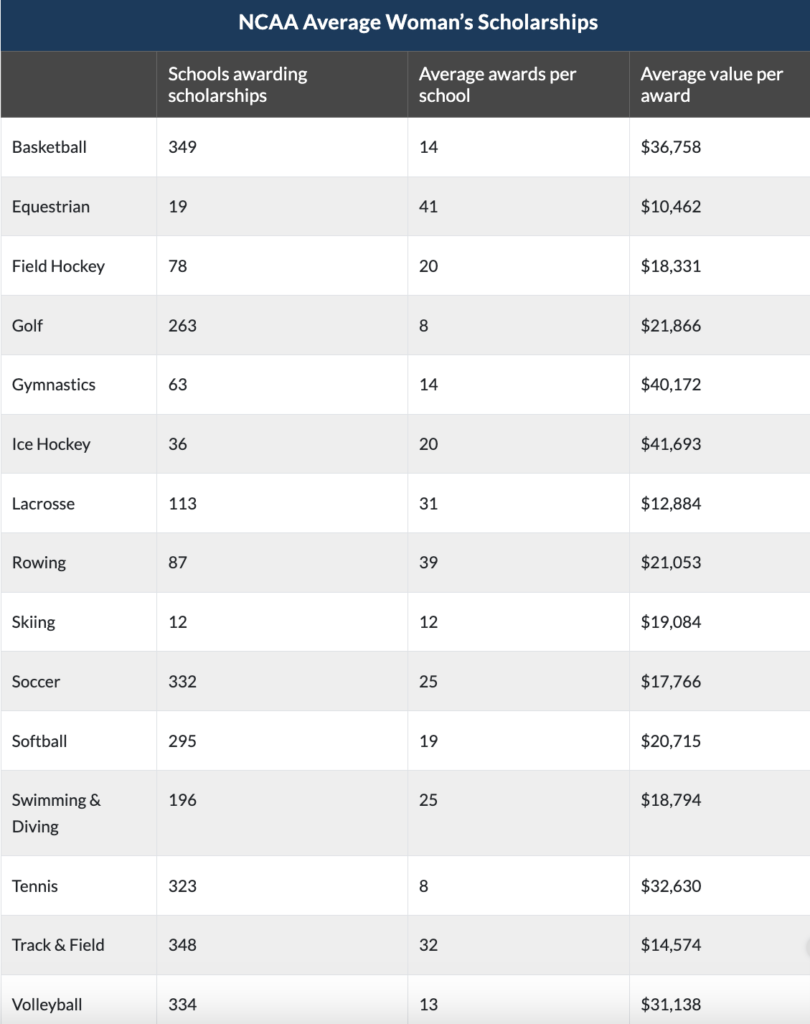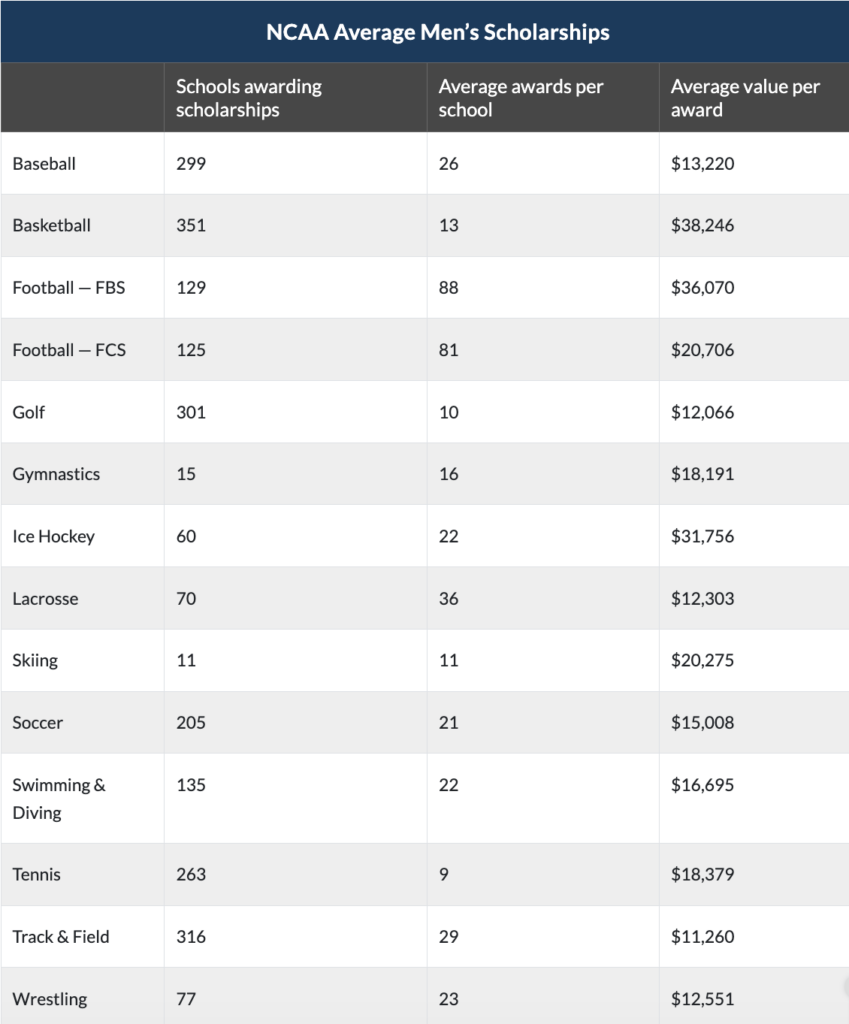For many young athletes with dreams of playing sports at the collegiate level, earning a sports scholarship can be a game-changer. It helps make college more affordable and offers a chance to compete at a higher level, potentially turning pro. However, the path to securing a sports scholarship is not always clear, and there are several things parents should know to navigate this process effectively.
Participating in sports offers numerous benefits beyond the thrill of competition and physical activity. For high school students, involvement in sports can open doors to sports scholarships to help finance their college education. Today, let's explore seven essential aspects of sports scholarships that every parent should know.
1. The Reality of Full Scholarships
First and foremost, it's essential to understand that full sports scholarships are relatively rare. While they are often glorified in movies and media, the truth is that only a small percentage of student-athletes receive full scholarships. These full scholarships typically cover tuition, room, board, and other expenses. In reality, most sports scholarships are partial scholarships, which cover only a portion of these costs.
According to the National Collegiate Athletic Association (NCAA), "Only about two percent of high school athletes are awarded athletics scholarships to compete in college." For many sports, only a limited number of full scholarships are available per team. For example, Division I football teams are limited to 85 full scholarships. Other sports have even fewer available.
Parents should set realistic expectations for their child's scholarship prospects and explore other financial aid options to cover the remaining college expenses.


2. Types of Scholarships
Sports scholarships come in various forms, and it's important to understand the distinctions:
a) Full Scholarships
As mentioned earlier, these cover all (or most) of the college costs – tuition, room and board, books, and fees.
>>RELATED: Understanding Merit Scholarships: Your Guide to Financial Aid Success
b) Partial Scholarships
These cover a portion of the expenses, and the amount can vary greatly.
c) Athletic Scholarships vs. Academic Scholarships
Besides athletic scholarships, some student-athletes may be eligible for academic scholarships based on their academic achievements. Encourage your child to excel academically to increase their chances of receiving financial aid.
d) Walk-On Opportunities
Some athletes may join a college sports team as walk-ons, initially without scholarships. However, they may earn a scholarship through their performance over time.
3. Renewal of Scholarships
Getting a sports scholarship is the first step, but it doesn't end there. What some parents might not know is that scholarships usually need to be renewed every year. The college or university and the coaches decide whether to give it to you again. They look at how well you play, how dedicated you are, and if you follow the team's rules to decide if you can keep the scholarship.
It's crucial for parents and student-athletes to understand the terms and conditions of their scholarship offers and what is expected for renewal. Encourage your child to maintain both their athletic and academic performance to secure scholarship renewals.
>>RELATED: 5 Great Scholarships for High School Seniors
4. The Recruiting Process
Getting recruited by colleges is a crucial step in securing a sports scholarship. Here's what you need to know:
a) Start Early
The process of getting noticed by colleges usually starts when your child is in the early years of high school, and sometimes even before that. Encourage your child to join club teams, attend showcase events, and take part in tournaments to get noticed by colleges.
b) Create a Highlight Reel
Coaches often watch videos to see how good potential players are. Create a video that shows your child's best moments, skills, and how well they perform in games.
c) Attend College Camps
Many colleges host sports camps where coaches get to see up close how good an athlete you really are. If you can, go to these camps.
d) Communicate with Coaches
Encourage your child to reach out to college coaches to express interest and provide updates on their performance and achievements.
e) Official and Unofficial Visits
Student-athletes can take official visits to colleges, which are paid for by the school. Unofficial visits are self-funded but allow your child to get a feel for the campus and program.
5. Registering with the NCAA
For those aspiring to play college sports, especially at the Division I or Division II level, registering with the NCAA Eligibility Center is a crucial step. The NCAA Eligibility Center evaluates a student-athlete's academic and amateur status to determine their eligibility to compete in NCAA sports. Here's what you need to know:
a) Eligibility Requirements
Student-athletes must meet certain academic and amateurism requirements to be eligible to play NCAA sports. These requirements include a minimum GPA, completion of required high school courses, and adherence to amateurism rules.
b) Register Early
Students should register with the NCAA Eligibility Center during their sophomore year of high school to ensure all requirements are met.
c) Stay Informed
Keep up to date with NCAA rules and regulations regarding recruitment, eligibility, and scholarships to avoid any potential pitfalls.
6. Building a Sports Portfolio
In addition to athletic skills, colleges are interested in athletes' character, work ethic, and overall suitability for their program. Parents can help their child build a sports portfolio that showcases not only their physical abilities but also their character and commitment. Here are some ways to build a strong sports portfolio:
a) Highlight Sports Achievements
Keep a record of your child's athletic achievements, including awards, records, and statistics.
b) Include Letters of Recommendation
Encourage coaches, teachers, and mentors to write letters of recommendation that speak to your child's character, dedication, and work ethic.
c) Maintain a Strong Academic Record
Colleges often prioritize student-athletes who excel academically. Ensure that your child maintains good grades throughout high school.
d) Participate in Community Service
Involvement in community service demonstrates character and leadership qualities. Document any volunteer work your child participates in.
e) Create a Personal Statement: Have your child write a personal statement that explains their passion for their sport, their goals, and what they can bring to a college team.
7. The Importance of Balance
Finally, it's crucial to emphasize the importance of balance as your child pursues a sports scholarship. While achieving athletic success is important, it should not come at the expense of a well-rounded education and personal development.
Encourage your child to explore their interests beyond sports and to maintain a healthy balance between athletics and academics.
Final Thoughts
Earning a sports scholarship is a big deal, but it's not always easy. Parents can help by being realistic, learning about the different types of scholarships, and supporting their child's school and sports efforts. Being informed and involved can make a big difference in your child's journey to college and sports success.



